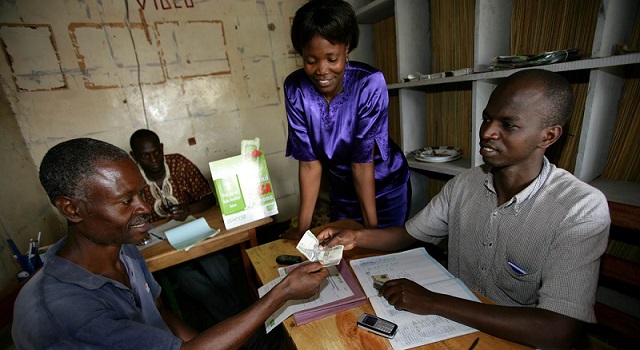
A look at 18 countries making the “secret sauce” that enables more stable and robust economic growth
COMMENT | ANU MADGAVKAR & JEONGMIN SEONG | Emerging economies are often grouped together as something of a monolith. But when it comes to economic performance, they diverge widely, with only some countries achieving rapid and relatively consistent growth over long periods. What is their secret?
In the McKinsey Global Institute’s recent review of the per capita GDP growth of 71 emerging economies, 18 stood out. In seven – China, Hong Kong, Indonesia, Malaysia, Singapore, South Korea, and Thailand – per capita GDP grew by at least 3.5% annually over the half-century from 1965 to 2016.
The other 11 high performers tend to get less attention, as their per capita GDP growth began to accelerate more recently. Yet Azerbaijan, Belarus, Cambodia, Ethiopia, India, Kazakhstan, Laos, Myanmar, Turkmenistan, Uzbekistan, and Vietnam all achieved per capita GDP growth of at least 5% for 20 years, from 1996 to 2016.
Development economists have long sought to identify the “secret sauce” that enables certain economies to achieve more stable and robust growth than their counterparts. A look at what these 18 economies have in common provides powerful insights into what that formula might be.
From a policy perspective, all 18 of the economies on our list have pursued pro-growth policies that encouraged a virtuous cycle of rising productivity, income, and demand. Those agendas included, for example, steps to increase capital accumulation, such as by forcing retirement saving; efforts to boost government effectiveness; and measures to encourage more competitive dynamics in the domestic market.
This has enabled the rise of a generation of large companies that have served as powerful engines of GDP growth. And, indeed, the 18 standout emerging economies have twice as many competitive, publicly listed companies with annual revenues of $500 million or more as other developing countries (adjusted for economy size).
In these countries, the revenue-to-GDP ratio almost tripled in just 20 years, from 22% in 1995 to 64% in 2016 – far higher than the ratio in other emerging economies, and approaching high-income country levels. Over the same period, the contribution of value-added to GDP also rose sharply, from 11% to 27%.
Examples of highly successful emerging-economy firms include the Chinese giants Alibaba and Tencent. Regional titans like as M-Pesa, a mobile phone-based financial-services firm that started in Kenya, has spread throughout East Africa, and Go-Jek, an Indonesian ride-hailing and logistics company, is now expanding to the Philippines, Singapore, Thailand, and Vietnam.
Contrary to popular perception, these companies succeed in a hyper-competitive environment, where getting to the top is hard, and staying there is even harder. Those that do often become formidable competitors in the international arena. In the 18 high-performing emerging economies, only 45% of firms that were in the top quintile, in terms of profit generation, in 2001-2005 were still there a decade later in 2011-2015. Over the same period, in the high-income economies, 62% of incumbents managed to hold onto their positions.
From 1995 to 2016, large publicly listed companies in the fastest-growing emerging economies expanded their annual net income 2-5 percentage points faster than firms in other emerging and high-income economies. From 2005 to 2016, they contributed about 40% of the total combined revenue and net income growth of all big public companies worldwide, even though they accounted for only about 25% of total revenue and net income in 2016. More than 120 of these companies have joined the Fortune Global 500 list since 2000.
The most successful emerging-economy companies – which tend to be export-oriented – not only boost growth, but also help to spur progress in the business environment. Moreover, they fuel productivity gains by investing in assets, research and development, and job training at a higher rate than small and medium-size firms, though the latter are also essential elements of successful countries’ business ecosystems.
The question now is whether the high-performing emerging economies can sustain rapid and consistent growth, and whether their peers can emulate their success. Given changes to the economic environment, the challenge ahead is certainly formidable.
For starters, a phenomenon known as premature deindustrialisation is taking hold, with manufacturing growth in developing countries peaking at much lower levels of income than in the past. Furthermore, economies around the globe are being challenged by the rise of automation – a process that will only accelerate. Trade patterns are also shifting.
Nonetheless, the potential of the emerging economies must not be underestimated. If the other 53 emerging economies we looked at matched the productivity growth of their 18 high-performing peers, the global economy would be $11 trillion richer by 2030 – the equivalent of adding another China.
The key for emerging economies will be to seize the opportunities ahead. For example, as China moves from low-cost manufacturing to knowledge-intensive manufacturing, it will create space for low-income countries like Bangladesh and Vietnam to expand their manufacturing sectors, such as in textiles.
Over the past 15 years, the emerging economies have accounted for about two-thirds of global GDP growth. That trend is likely to continue. If countries implement smart policies, building on the lessons of their most dynamic counterparts, robust and consistent growth can prevail across the emerging world.
****
Anu Madgavkar is a McKinsey Global Institute partner. Jeongmin Seong is a senior fellow at the McKinsey Global Institute in Shanghai.
Copyright: Project Syndicate, 2018.
 The Independent Uganda: You get the Truth we Pay the Price
The Independent Uganda: You get the Truth we Pay the Price


